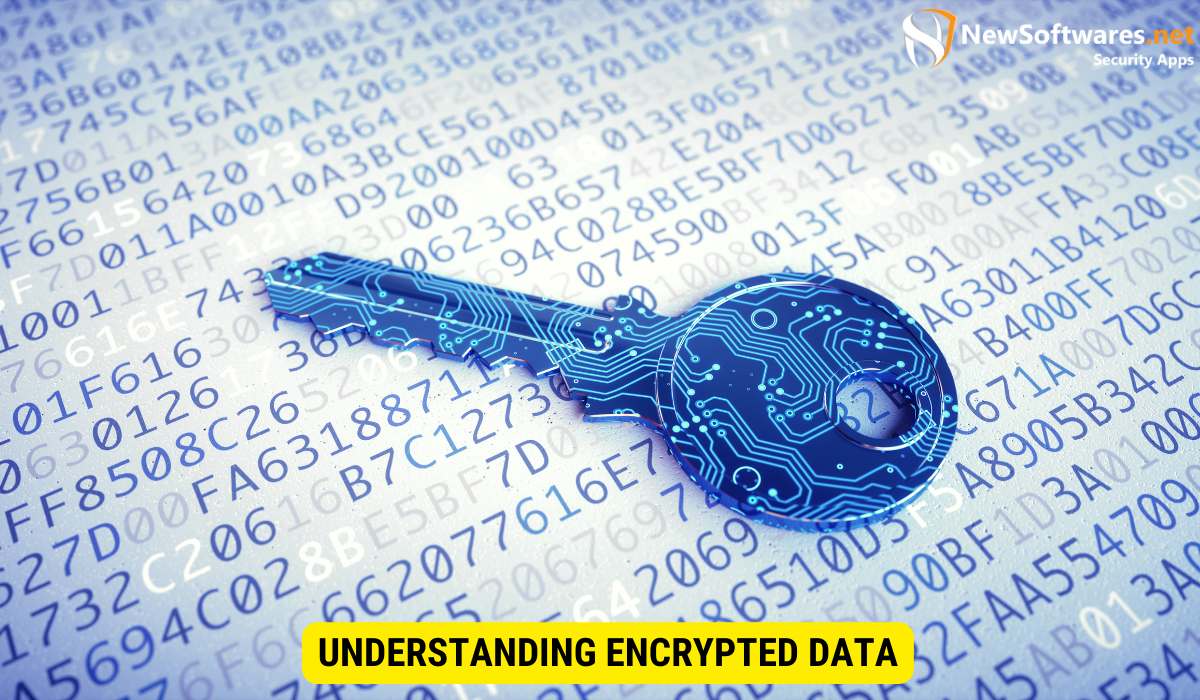Performing analytics on encrypted data involves using specialized tools and techniques to analyze data without the need for decryption. Key steps include preparing encrypted data, using tools like homomorphic encryption, and interpreting results while considering encryption-related limitations. Organizations can overcome challenges by optimizing algorithms, ensuring data privacy and security, and staying informed about emerging trends in encrypted data analytics. The future of this field includes the integration of AI and ML techniques, promising enhanced insights and decision-making capabilities.
In today’s data-driven world, organizations often find themselves faced with the challenge of analyzing sensitive and private information. One such challenge is performing analytics on encrypted data. Encryption plays a crucial role in protecting data privacy and security, but it also presents obstacles when it comes to extracting insights and trends from the data. Together, we will explore the intricacies of performing analytics on encrypted data and provide step-by-step guidance on how to overcome these challenges.
Understanding Encrypted Data

Before delving into the process of performing analytics on encrypted data, it’s important to grasp the concept of data encryption and its significance. Encryption involves converting plain text data into an unreadable format using cryptographic algorithms. This process ensures that only authorized individuals with the correct decryption keys can access and interpret the data. The importance of data encryption cannot be overstated, as it safeguards sensitive information from unauthorized access and minimizes the risk of data breaches.
The Importance of Data Encryption
Data encryption is essential for preserving the privacy and integrity of sensitive information. By encrypting data, organizations can comply with industry regulations, protect customer data, and maintain trust with their stakeholders. Encryption also acts as a safety net, ensuring that even if data is accidentally or intentionally disclosed, it remains indecipherable to unauthorized individuals.
One of the key benefits of data encryption is its ability to provide confidentiality. When data is encrypted, it becomes extremely difficult for unauthorized parties to access and understand the information. This is particularly important for sensitive data, such as financial records, personal health information, and trade secrets. By encrypting this data, organizations can ensure that even if it falls into the wrong hands, it remains protected.
Data encryption also plays a crucial role in data integrity. By encrypting data, organizations can verify that the information has not been tampered with during transmission or storage. Encryption algorithms often include mechanisms for detecting any changes made to the encrypted data, ensuring that the integrity of the information is maintained. This is especially important in scenarios where data is transmitted over insecure networks or stored in vulnerable environments.
Basics of Encrypted Data
To perform analytics on encrypted data, it’s crucial to understand the basics of encrypted data structures. Encrypted data typically consists of ciphertext, which is the encrypted form of the original plain text data, and the associated encryption metadata, such as the encryption algorithm used and the encryption keys. In most cases, the original data is not readily available for analysis, making it necessary to work with the encrypted version. This presents a unique set of challenges, including the inability to directly apply traditional analytics techniques on encrypted data.
When working with encrypted data, it’s important to have a clear understanding of the encryption algorithm used. Different encryption algorithms have varying levels of security and computational complexity. Some common encryption algorithms include Advanced Encryption Standard (AES), Data Encryption Standard (DES), and RSA. Each algorithm has its own strengths and weaknesses, and the choice of algorithm depends on factors such as the level of security required and the computational resources available.
In addition to the encryption algorithm, the encryption keys play a crucial role in decrypting the data. Encryption keys are essentially a set of parameters that determine how the encryption algorithm operates. There are two main types of encryption keys: symmetric and asymmetric. Symmetric encryption uses a single key for both encryption and decryption, while asymmetric encryption uses a pair of keys – one for encryption and another for decryption. Understanding the type of encryption keys used is essential for performing analytics on encrypted data.
Performing analytics on encrypted data requires specialized techniques and tools. Traditional analytics techniques, such as data mining and statistical analysis, cannot be directly applied to encrypted data. Instead, organizations need to employ techniques such as homomorphic encryption, secure multi-party computation, and differential privacy. These techniques allow for data analysis while preserving the privacy and security of the encrypted data.
In conclusion, understanding encrypted data is crucial for organizations looking to perform analytics on sensitive information. Data encryption provides confidentiality, integrity, and compliance with industry regulations. By grasping the basics of encrypted data structures and employing specialized techniques, organizations can unlock the potential of encrypted data while ensuring the privacy and security of the information.
Tools for Analyzing Encrypted Data
Fortunately, advancements in technology have led to the development of specialized tools for analyzing encrypted data. These tools enable organizations to glean meaningful insights from encrypted data while preserving its confidentiality. Let’s explore some of the tools commonly used for encrypted data analytics.
Overview of Data Analytics Tools
Data analytics tools designed specifically for encrypted data employ advanced techniques such as homomorphic encryption and secure multi-party computation. Homomorphic encryption allows computations to be performed directly on encrypted data, creating an environment where analytics can be performed without compromising the privacy of the data. Secure multi-party computation, on the other hand, enables multiple parties to collaborate on data analysis without revealing their individual inputs. These tools provide a secure and efficient means of performing analytics on encrypted data, empowering organizations to derive insights while maintaining data privacy.
Selecting the Right Tool for Your Data
Choosing the appropriate analytics tool for encrypted data depends on various factors such as the type and volume of data, the complexity of the analysis required, and the available resources. It’s crucial to evaluate the features and capabilities of different tools to ensure they align with your specific needs. Some tools may excel in certain types of analysis, while others may offer faster processing speeds. By carefully assessing your requirements, you can select a tool that maximizes the utility and accuracy of your analytics on encrypted data.
Steps to Perform Analytics on Encrypted Data
Performing analytics on encrypted data involves a well-defined process that consists of several key steps. Let’s look at these steps in detail:
Preparing Your Encrypted Data
The initial step in performing analytics on encrypted data is to prepare the data for analysis. This involves decrypting the necessary portions of the data while preserving the privacy of the sensitive information. Securely decrypting the data requires the appropriate encryption keys and must be done in a controlled and secure environment. Once the data is decrypted, it can be transformed into a format suitable for analysis, such as a structured dataset or a data cube.
Analyzing the Data
With the decrypted data prepared, the next step is to perform the desired analytics. This involves applying statistical and mathematical techniques to uncover patterns, trends, and correlations in the data. As mentioned earlier, specialized analytics tools for encrypted data can perform computations directly on the encrypted data without the need for decryption. These tools enable a wide range of analysis, including data exploration, predictive modeling, and anomaly detection.
Interpreting the Results
Once the analysis is complete, it’s essential to interpret the results accurately. The insights obtained from encrypted data analytics can provide valuable information for decision-making and strategic planning. However, it’s important to consider the limitations imposed by the encryption process. Encrypted data analytics may not produce the same level of granularity or detail as traditional analytics methods. It’s crucial to understand these limitations and communicate the results accordingly to avoid misinterpretation or overgeneralization.
Challenges in Analyzing Encrypted Data
While performing analytics on encrypted data offers numerous benefits, it also poses unique challenges that organizations must address. Let’s explore some common obstacles and strategies to overcome them.
Common Obstacles and How to Overcome Them
One of the main challenges in analyzing encrypted data is the computational overhead involved. Encryption adds an extra layer of complexity that can significantly impact processing speed and resource requirements. To overcome this challenge, organizations can leverage cloud-based solutions that offer scalable computing power and specialized hardware for encrypted data analytics. Additionally, optimizing algorithms and data structures can help improve efficiency and reduce computational costs.
Ensuring Data Privacy and Security
Another crucial challenge is maintaining data privacy and security throughout the analytics process. Organizations must implement robust security protocols to ensure the confidentiality of the decrypted data, as well as protect the analysis results from unauthorized access. This includes implementing access controls, encryption, and secure data transmission mechanisms. Regular security audits and ongoing monitoring are essential to detect and mitigate any potential vulnerabilities or breaches.
Future Trends in Encrypted Data Analytics

The field of encrypted data analytics is constantly evolving, with new trends and developments shaping its future. To stay ahead in encrypted data analytics, organizations should keep an eye on emerging technologies and innovations.
Predicted Developments in the Field
One trend that is expected to gain momentum is the integration of artificial intelligence (AI) and machine learning (ML) techniques into encrypted data analytics. AI and ML can help automate the analysis process, identify complex patterns in encrypted data, and improve the accuracy of predictive models. Additionally, advancements in secure hardware and cryptographic protocols are likely to enhance the efficiency and security of encrypted data analytics.
Staying Ahead in Encrypted Data Analytics
In order to stay ahead in encrypted data analytics, organizations should invest in research and development, foster collaborations with academia and industry experts, and continuously update their knowledge and skills. By actively embracing new technologies and staying informed about developments in the field, organizations can unlock the potential of encrypted data analytics and gain a competitive edge in their respective industries.
Key Takeaways
- Data encryption plays a crucial role in protecting sensitive information.
- Performing analytics on encrypted data requires specialized tools.
- Preparing encrypted data and decrypting it securely are essential steps in the analysis process.
- Interpreting the results of encrypted data analytics requires an understanding of the limitations imposed by encryption.
- Challenges in analyzing encrypted data include computational overhead and ensuring data privacy and security.
- The future of encrypted data analytics lies in the integration of AI and ML techniques, as well as advancements in secure hardware and cryptographic protocols.
FAQs
Q1: Can encrypted data be analyzed without decryption?
A: Yes, specialized analytics tools for encrypted data allow computations to be performed directly on the encrypted data, eliminating the need for decryption.
Q2: What are the benefits of performing analytics on encrypted data?
A: Analyzing encrypted data helps organizations derive insights and trends while maintaining data privacy and adhering to industry regulations. It ensures the confidentiality of sensitive information and minimizes the risk of data breaches.
Q3: How can organizations overcome the challenges associated with analyzing encrypted data?
A: Organizations can overcome challenges by leveraging cloud-based solutions for scalable computing power, optimizing algorithms and data structures, and implementing robust security protocols to protect data privacy and security.
Conclusion
Performing analytics on encrypted data is a complex yet essential process for organizations. By understanding the importance of data encryption, selecting the right tools, following a well-defined process, and addressing the challenges involved, organizations can leverage the power of encrypted data analytics while ensuring data privacy and security. The future of this field holds exciting possibilities with the integration of AI and ML techniques, paving the way for enhanced insights and strategic decision-making in encrypted data analytics.
